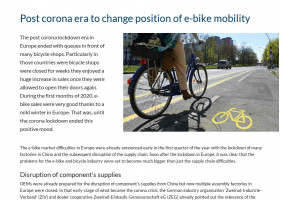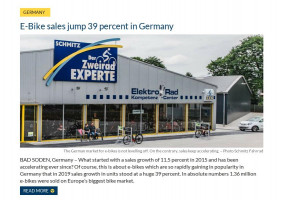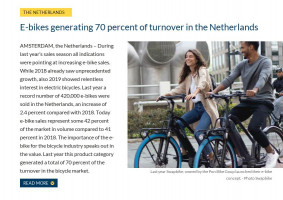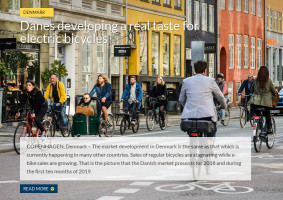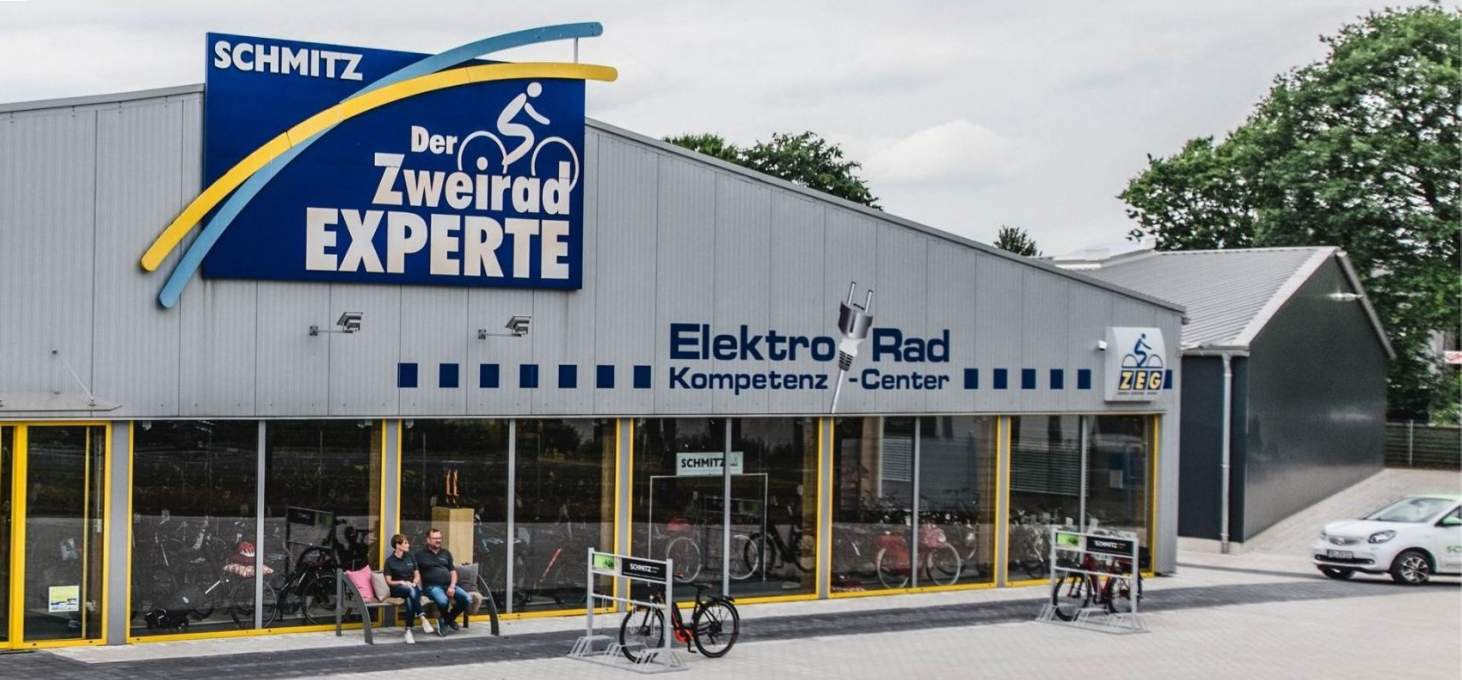
BAD SODEN, Germany – What started with a sales growth of 11.5 percent in 2015 and has been accelerating ever since? Of course, this is about e-bikes which are so rapidly gaining in popularity in Germany that in 2019 sales growth in units stood at a huge 39 percent. In absolute numbers 1.36 million
e-bikes were sold on Europe’s biggest bike market.
Read more
Germany’s industry association ‘Zweirad-Industry-Verband’ (ZIV) published its 2019 sales statistics on March 11. What these figures make particularly clear is that the 39 percent growth in the sale of electric bicycles throughout 2019 must have surprised ZIV. Because with the publication of the half-year figures on the German market, the industry association still assumed a much lower growth. Last September, Bike Europe concluded that due to this low forecast for the second half year of 2019 ZIV must have expected delivery problems as a result of the anti-dumping measures that came into effect in January 2019 and that are aimed at the import of electric bicycles manufactured in China. Clearly that did not happen as sales jumped by a big 39 percent and came in at 1,360,000 units for the whole of 2019.
Sales not leveling off
What is also surprising about the ZIV figures is that after years of growth, the German market for e-bikes is not levelling off. On the contrary, sales keep accelerating. After the 2015 sales rise of 11.5 percent, 2016 saw a 13 percent growth followed on by 19 percent in 2017 and 36 percent in 2018. And contrary to ZIV’s expectations, last year again saw records been broken with a 39 percent growth to a total sale that got close to 1.4 million units.
What this unprecedented growth brings in terms of money and turnover is, according to the ZIV, also huge. Sales in euros of regular bicycles as well as e-bikes came in at 4.23 billion euro; a 34 percent increase on the 2018 total for bike sales. Including P&A production and sales the 2019 turnover total for the German industry stands at some 7 billion euro. This figure includes bike sales that totaled 4.31 million units; up 3.1 percent on 2018.
Technical innovations, the attractiveness of e-bikes, but also the increasing importance of bicycles and e-bikes for everyday mobility are main reasons for growth in the German bicycle industry
Sales of regular bicycles declined by 7.8 percent. The average selling price per bike (including e-bikes) stood in 2019 at 982 euro across all sales channels; about 30 percent higher than in 2018. Remarkably the average retail price of regular bicycles also increased last year. This is a clear indication of a trend towards high-quality branded products, as in previous years. According to ZIV, “technical innovations, the attractiveness of e-bikes, but also the increasing importance of bicycles and e-bikes for everyday mobility” are the main reasons for this trend.
Sales per category
With the close to 1.4 million e-bikes sold last year the market share of this category has risen to 31.5 percent. ZIV expects this market share to grow to 40 percent on the ‘medium-term’ and even 50 percent on a longer term. For the first time ZIV has broken down the 1.4 million e-bikes sold into categories. It shows e-trekking models are the most sold ones with a 36 percent share in total sales; e-city bikes stands at 31 percent followed by e-MTBs at 26.5 percent and e-cargo bikes at 4 percent. Speed pedelecs and e-road bikes each scored a share of 0.5 percent and 1.5 percent ‘others’.
‘Made in Germany’ e-bikes and bicycles are also in demand on the country’s export markets. The combined export of bicycles and e-bikes increased by 15 percent to 1.45 million units in 2019. The export of e-bike alone expanded to 531,000 units, up 21 percent compared with 2018.
Corona crisis
Siegfried Neuberger, ZIV’s MD commented on the 2019 figures “We are pleased about the very positive development of the bicycle and e-bike market in 2019. This shows that topics such as sustainable mobility, health and fun cycling in the German society and politics has arrived. In addition, innovations, attractive design and a wide range of models promote the demand from the end customer. We are certain that this positive trend will continue, although the negative impact of the corona virus on the supply chain so far cannot be assessed.”

